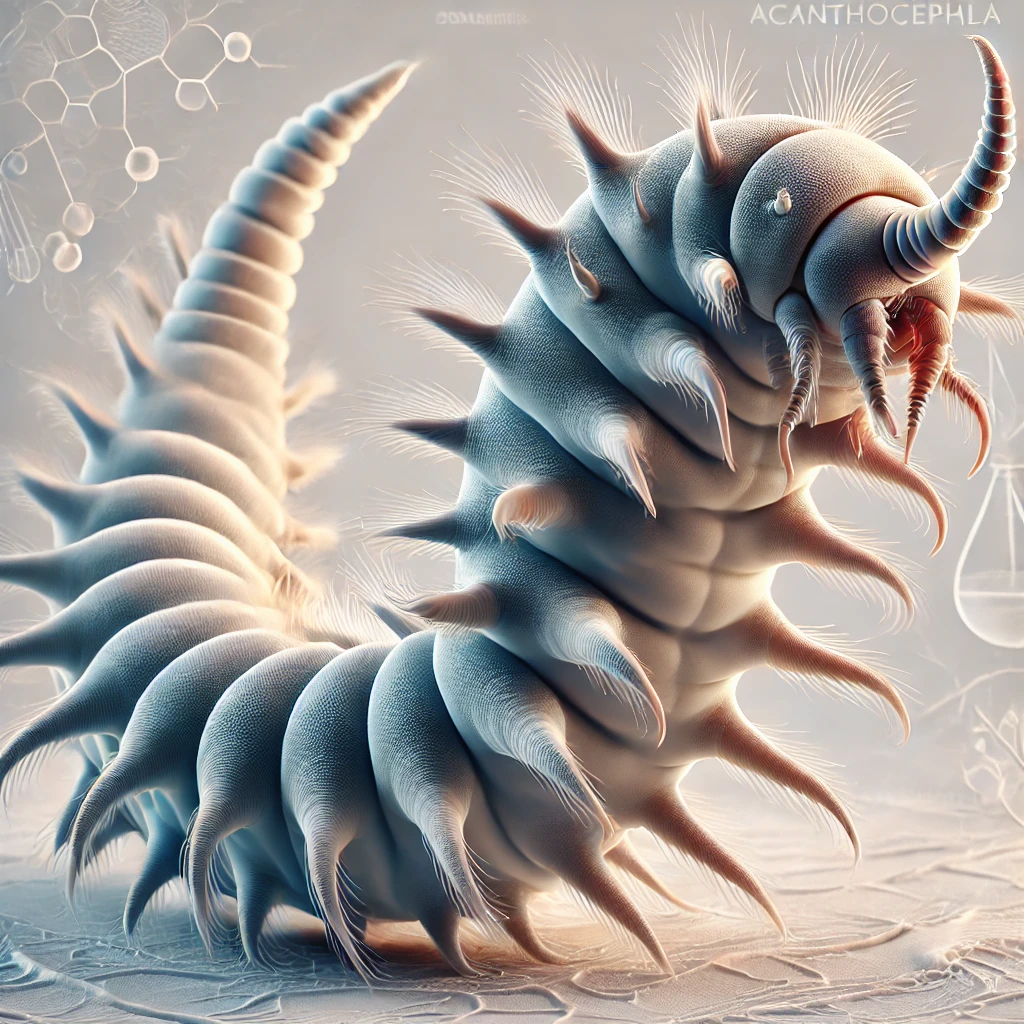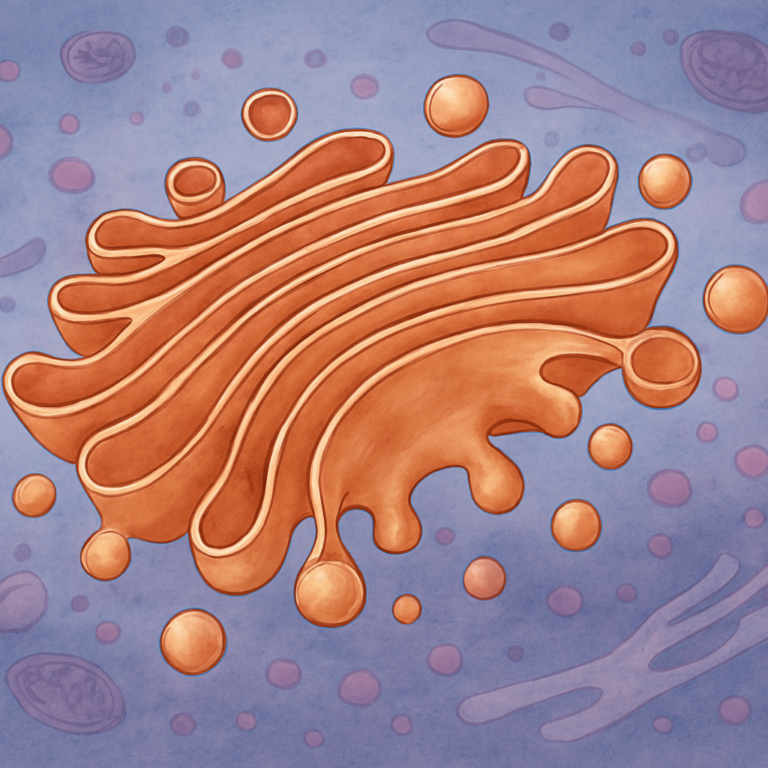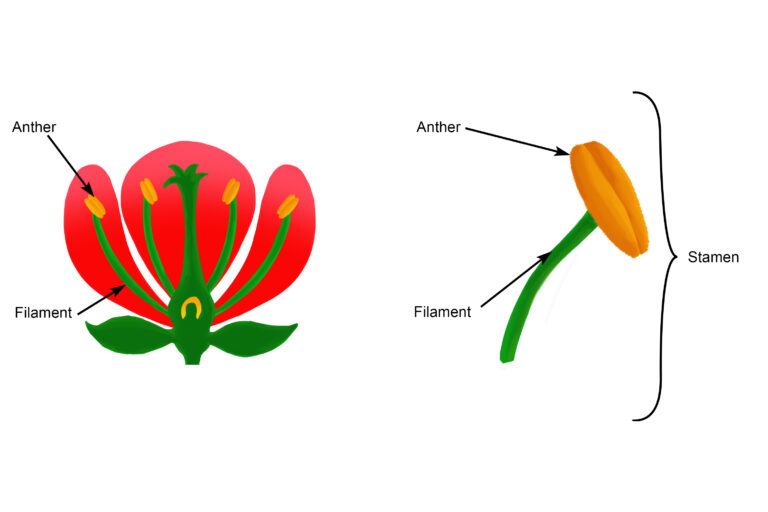Introduction
Acanthocephala, commonly known as thorny-headed worms, are a phylum of parasitic worms. They are predominantly found in the intestines of fish, birds, and mammals, including humans (Amin, 2013). The name “Acanthocephala” derives from Greek, meaning “spiny head,” referring to the unique spiny proboscis that the worms use to attach to their host’s intestinal wall.
Biology and Anatomy
Acanthocephala are characterized by their elongated and cylindrical bodies, divided into an anterior proboscis and posterior trunk. The proboscis is retractable and covered with recurved hooks or spines, the key feature that distinguishes them from other worms (Herlyn et al., 2003).
They lack a digestive system, absorbing nutrients directly through their body wall from the host’s intestine. In terms of their reproductive system, Acanthocephalans are dioecious, meaning there are distinct male and female organisms. The males possess copulatory bursae and cement glands, while females produce millions of eggs that are protected by a thick shell (Hanelt, Janovy & Amin, 2001).
Life Cycle
The life cycle of Acanthocephala comprises various stages. It starts with the female worm releasing eggs into the host’s intestine, which are then excreted with the host’s feces. Once in the environment, the eggs are consumed by an intermediate host, typically an arthropod such as a beetle or crustacean. Within this host, the eggs hatch into acanthor larvae, which then develop into acanthella and finally into infective cystacanth larvae. When the definitive host (a vertebrate) consumes the infected intermediate host, the cystacanths mature into adult worms, thereby completing the life cycle (Kennedy, 2006).
Human and Veterinary Impact
Acanthocephala can cause significant health issues in both humans and animals. The worms can cause inflammation and perforation of the intestinal wall, leading to potential secondary bacterial infections. In humans, infections are typically asymptomatic but can lead to abdominal pain, diarrhea, and malnutrition in severe cases (Smales, 2014).
In veterinary medicine, Acanthocephala are significant parasites, especially in aquaculture and poultry farming. In fish, they can cause significant morbidity and mortality, affecting the productivity of the industry (Mehrdana & Buchmann, 2017).
Prevention and Control
Prevention of Acanthocephala infection primarily involves avoiding consumption of raw or undercooked foods that could harbor the parasite. Regular deworming of pets can also reduce the risk of zoonotic transmission. In aquaculture, good management practices such as feeding strategies and regular monitoring can help control the prevalence of these parasites (Mehrdana & Buchmann, 2017).
Conclusion
Acanthocephala, the thorny-headed worms, are a significant group of parasites known for their unique biology and life cycle. They continue to be a subject of scientific investigation due to their impact on human health, veterinary medicine, and agriculture. As our understanding of these intriguing organisms grows, so does our ability to control and prevent the diseases they cause.
References
1. Amin, O.M. (2013). Classification of the Acanthocephala. Folia Parasitologica, 60(4), 273–305.
2. Herlyn, H., Piskurek, O., Schmitz, J., Ehlers, U., & Zischler, H. (2003). The syndermatan phylogeny and the evolution of acanthocephalan endoparasitism as inferred from 18S rDNA sequences. Molecular Phylogenetics and Evolution, 26(1), 155–164.
3. Hanelt, B., Janovy, J. & Amin, O.M. (2001). Comparative Life Cycles and Life Histories of North American Rhabdias spp. (Nematoda: Rhabdiasidae): Lungworms from Snakes and Anurans. Journal of Parasitology, 87(4), 907-914.
4. Kennedy, C.R. (2006). Ecology of the Acanthocephala. Cambridge University Press.
5. Smales, L.R. (2014). Acanthocephalans in wildlife vertebrates in captivity in the UK. Journal of Helminthology, 88(4), 397–402.
6. Mehrdana, F., & Buchmann, K. (2017). Effects of common carp (Cyprinus carpio) on sediment mixing depth and mobile phosphorus mass in the sediment. Aquaculture Reports, 5, 72–77.







